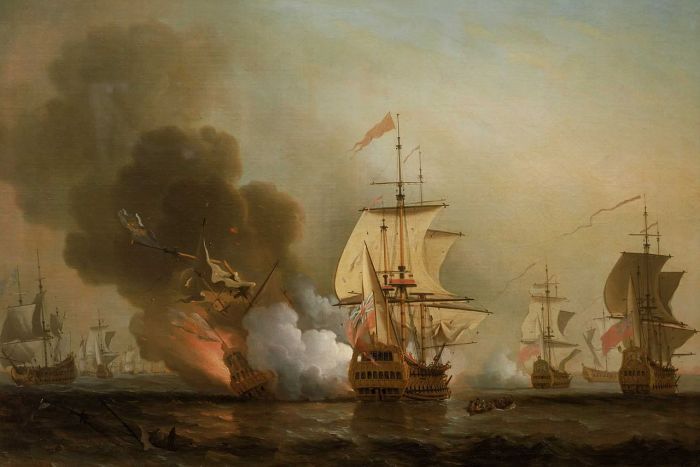
The Spanish treasure ship the San José was lost at sea for more than 300 years, but it never lost its ultra-precious cargo. The Woods Hole Oceanographic Institution, which located the sunken wreck off the coast of Colombia in November 2015, has finally confirmed that the ship’s legendary golden hoard remains intact.
“We’ve been holding this under wraps out of respect for the Colombian government,” Rob Munier, the institution’s vice president for marine facilities and operations told the Associated Press. That reticence may also be due to the singular value of the vessel’s cargo: The San José’s submerged treasure is estimated to be worth up to an eye-popping $17 billion, according to AP.
Loaded up with gold, silver, and emerald from the mines of Potosi, Peru, the three-masted Spanish galleon armed with 62 cannons, left South America in 1708, intent on delivering its valuables to Spain. The vessel was no match, however, for a quartet of English warships—the Spanish commander opted to set sail without an escort of warships, which were delayed. The ship was lost, along with its treasure and much of the 600-person crew, all casualties of the War of Spanish Succession.
Teacups at the site of the San José shipwreck. Photo courtesy of REMUS image and the Woods Hole Oceanographic Institution.
For over three centuries, the sunken vessel was considered the “holy grail of shipwrecks,” eagerly sought by treasure hunters. The Woods Hole Oceanographic Institution was able to find the long-lost ship using a robotic submarine called the REMUS 6000, which detects objects on the seafloor using sonar. Previous missions for the REMUS have included a visit to the sunken Titanic in 2010 and finding the wreckage of flight Air France 447 off Brazil in 2011.
Once the institute located the Spanish vessel, REMUS was sent in for a closer look, getting within 30 feet of the submerged ship. The underwater robot confirmed the San José‘s identity by taking photographs that showed its distinctive cannons, which were engraved with dolphins.
“The wreck was partially sediment-covered, but with the camera images from the lower altitude missions, we were able to see new details in the wreckage and the resolution was good enough to make out the decorative carving on the cannons,” said Mike Purcell, leader of the exhibition, in a statement. “MAC’s [Maritime Archaeology Consultants] lead marine archaeologist, Roger Dooley, interpreted the images and confirmed that the San José had finally been found.”
The REMUS 6000 helped confirm that a sunken ship was the long-lost San José. Photo courtesy of Mike Purcell and the Woods Hole Oceanographic Institution.
Colombia has announced plans to build a museum and a state-of-the-art conservation lab for San José, offering the public the chance to see the fabulous treasure for themselves. The government has started fundraising efforts to help recover the treasure, still submerged beneath the ocean waves.
Before that can happen, one potential obstacle looms. Spain has also laid claim to the sunken riches, according to Bloomberg. And, according to the Washington Post, UNESCO warned that Colombia “would cause the irretrievable loss of significant heritage” if it sought to exploit the discovery of the San José commercially.
Complicating matters further, this isn’t the first time that researchers have claimed to find the fabled ship. In 1981, a US company called Sea Search Armada announced that they had located the San José, leading to a prolonged legal battle over how to divide up the treasure. A judge ruled in 2011 that after Colombia recovered its cultural patrimony, the company and the country could split the rest of the cargo 50/50. Sea Search Armada has since argued that the 2015 discovery was based on coordinates it gave to the Colombian government and so it is still entitled to the treasure.
For now, however, it appears this tale of treasure hunting won’t end in unimaginable wealth for the lucky discoverers. As reported by the Post, “researchers at Woods Hole say they have no financial stake in the haul.”